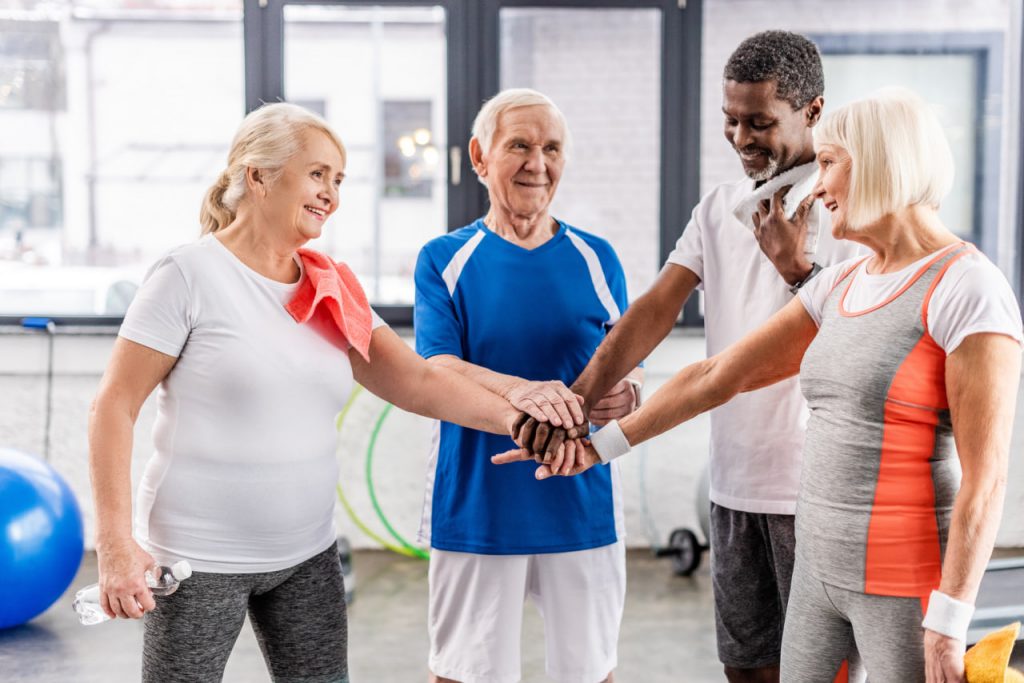As we grow older, our bodies naturally go through changes — joints may feel stiffer, muscles may tighten, and everyday movements might not feel as effortless as they once did. But one simple and often overlooked practice can make a dramatic difference in how we feel each day: stretching.
Stretching isn’t just for athletes or yoga enthusiasts. For seniors, it’s one of the most effective ways to improve mobility, relieve stiffness, reduce pain, and support better posture and balance. And the best part? It doesn’t require special equipment, long sessions, or even leaving your home.
A daily stretching routine, even just 10–15 minutes a day, can help you move more freely, feel more energized, and stay independent longer. In this article, we’ll explore why stretching is so beneficial for older adults — and walk through simple routines you can start using today.
Why Stretching Matters More As We Age
As we get older, the connective tissues in our body — muscles, tendons, and ligaments — tend to become less elastic. This can lead to a decrease in flexibility and a greater feeling of stiffness, especially in the morning or after long periods of sitting. Over time, this stiffness can impact posture, balance, and even breathing.
Regular stretching helps combat this by keeping muscles and joints limber, increasing blood flow to the tissues, and improving range of motion. It also helps prevent injury by preparing the body for everyday tasks like walking, reaching, or bending.
But beyond the physical, stretching also encourages mindfulness and relaxation. It gives you time to check in with your body, reduce stress, and start or end your day with calm intention.
Key Benefits of Stretching for Seniors
- Improves flexibility and range of motion
Maintaining flexibility helps with daily movements like tying your shoes, reaching a cabinet, or turning your head while driving. - Reduces muscle and joint stiffness
Stretching can help relieve tightness in common problem areas such as the neck, shoulders, back, and hips. - Supports better posture and balance
By loosening tight muscles and aligning the spine, stretching helps prevent slouching and reduces the risk of falls. - Enhances circulation
Stretching stimulates blood flow, which promotes tissue health and healing. - Encourages relaxation and stress relief
Slow, intentional movements can calm the nervous system, especially when combined with deep breathing.
When and How to Stretch
There’s no “perfect” time to stretch — the best time is the one that fits your routine. Many people enjoy stretching in the morning to loosen up after sleep, or in the evening to release tension from the day. You can stretch while seated, standing, or lying down, depending on your comfort and mobility.
Here are some simple guidelines:
- Warm up first with light movement (like walking in place) for a minute or two.
- Move slowly and gently — no bouncing or jerking.
- Stretch to the point of mild tension, not pain.
- Hold each stretch for 15 to 30 seconds and breathe deeply.
- Repeat stretches two to three times for each area.
A Simple Daily Stretching Routine for Seniors
This routine focuses on common areas of tightness for older adults. It can be done seated or standing, depending on your preference and balance.
1. Neck Stretch
Slowly tilt your head toward one shoulder, hold, then switch sides. Repeat a few times to release neck tension.
2. Shoulder Rolls
Roll your shoulders forward in slow circles, then backward. This helps reduce stiffness and improve posture.
3. Overhead Reach
Raise both arms slowly above your head, then reach gently toward the ceiling. Hold, then bring your arms down. Repeat several times.
4. Seated Hamstring Stretch
Sit on a chair and extend one leg straight out in front of you with the heel on the floor. Gently lean forward from the hips until you feel a stretch in the back of the leg. Hold and switch legs.
5. Ankle Circles
While seated, lift one foot and slowly rotate the ankle in circles. This improves joint mobility and circulation in the lower legs.
6. Side Stretch
While seated or standing, place one hand on your hip and reach the other arm over your head to the opposite side. Feel the stretch along your side. Hold, then switch.
7. Calf Stretch (Against Wall or Chair)
Stand facing a wall or holding the back of a chair. Step one foot back, keeping the heel down and back leg straight. Gently press forward to stretch the calf. Switch sides.
These stretches are simple, gentle, and require no equipment. Done consistently, they can make a meaningful difference in how you move and feel throughout the day.
Tips for Making Stretching a Habit
- Set a daily reminder — Morning or evening, try to do your routine at the same time each day.
- Pair it with another habit — Stretch while watching TV, after a walk, or before bedtime.
- Listen to your body — Never push through pain. Stretching should feel relieving, not uncomfortable.
- Celebrate consistency — Even if you only stretch for a few minutes, it counts. Progress comes from consistency, not intensity.

